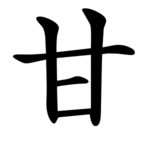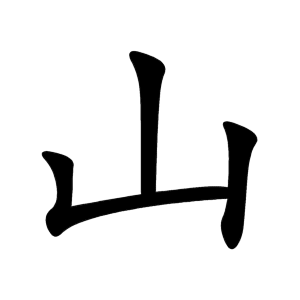
Radical 46 or radical mountain (山部) meaning "mountain" is one of the 31 Kangxi radicals composed of three strokes. It is found in the names of mountains generally in east Asia.

Radical 5 or radical second (乙部) meaning "second" is one of 6 of the 214 Kangxi radicals that are composed of only one stroke. However, this radical is mainly used to categorize miscellaneous characters otherwise not belonging to any radical, mainly featuring a hook or fold, and 乙 is the character with the least amount of strokes.
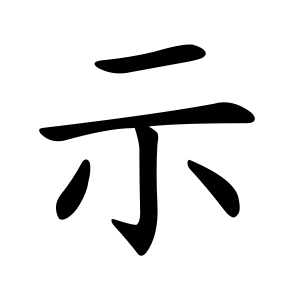
Radical 113 or radical spirit (示部) meaning ancestor or veneration is number 113 out of the 214 Kangxi radicals. It is one of the 23 radicals composed of 5 strokes. When appearing at the left side of a character, the radical transforms into 礻 in modern Chinese and Japanese jōyō kanji.
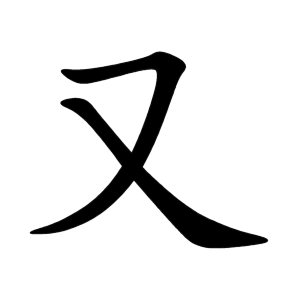
Radical 29 or radical again (又部) meaning "and", "again" or "right hand" is one of the 23 Kangxi radicals composed of two strokes.

Radical 63 or radical door (戶部) meaning "door" is one of the 34 Kangxi radicals composed of 4 strokes.

Radical 87 or radical claw (爪部) meaning "claw", "nail" or "talon" is one of the 34 Kangxi radicals composed of 4 strokes.
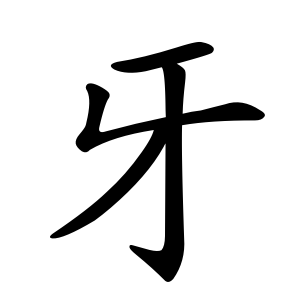
Radical 92 or radical fang (牙部) meaning "tooth" or "fang" is one of the 34 Kangxi radicals composed of 4 strokes.

Radical 95 or radical profound (玄部) meaning "dark" or "profound" is one of the 23 Kangxi radicals composed of 5 strokes.

Radical 96 or radical jade (玉部) meaning "jade" is one of the 23 Kangxi radicals composed of 5 strokes.

Radical 98, also known as the radical tile (瓦部) meaning "tile" is one of the 23 Kangxi radicals and is composed of 5 strokes.

Radical 124 or radical (羽部) meaning "feather" is one of the 29 Kangxi radicals composed of 6 strokes.
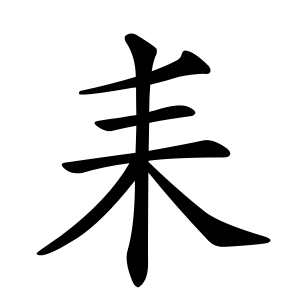
Radical 127 or radical plough (耒部) meaning "plough" is one of the 29 Kangxi radicals composed of 6 strokes.

Radical 147, also known as radical see (見部), represents the meaning "see" and is one of the 20 Kangxi radicals composed of 7 strokes.
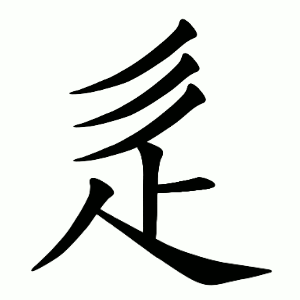
Radical 162 or radical walk (辵部) meaning "walk" is one of the 20 Kangxi radicals composed of 7 strokes. When used as a component, this radical character transforms into ⻍, ⻌, or ⻎.
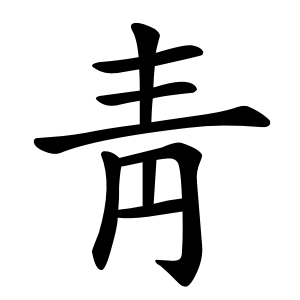
Radical 174 or radical blue (靑部/青部) meaning "blue" or "green" is one of the 9 Kangxi radicals composed of 8 strokes. It is also the character representing the color ao in Japanese, a general term covering both blue and green.
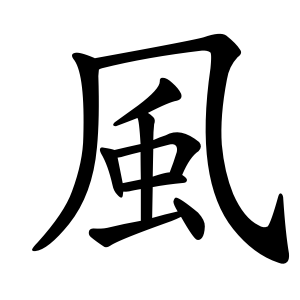
Radical 182 or radical wind (風部) meaning "wind" is one of the 11 Kangxi radicals composed of 9 strokes.
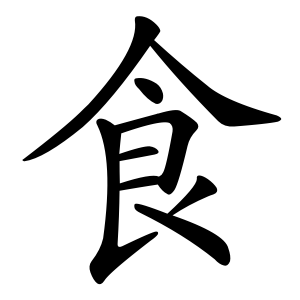
Radical 184 or radical eat (食部) meaning "eat" or "food" is one of the 11 Kangxi radicals composed of 9 strokes.

Radical 200 or radical hemp (麻部) meaning "hemp" or "flax" is one of the 6 Kangxi radicals composed of 11 strokes. Historically, it is the Chinese word for cannabis.
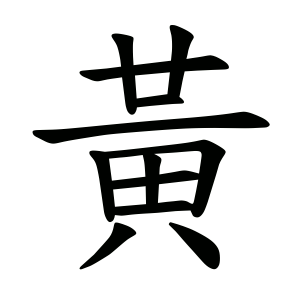
Radical 201 or radical yellow (黃部) meaning "yellow" is one of the 4 Kangxi radicals composed of 12 strokes.

Radical 203 (黑部) meaning "black" is one of the 4 Kangxi radicals composed of 12 strokes.
